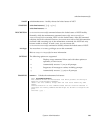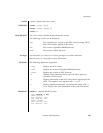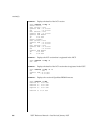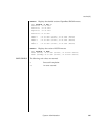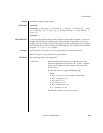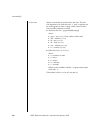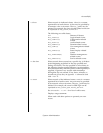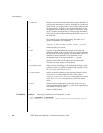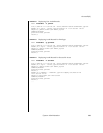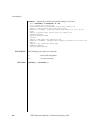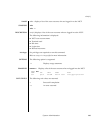
viewaudit(8)
392 XSCF Reference Manual • Last Revised January 2007
EXAMPLES EXAMPLE 1 Displaying Audit Records for December 12, 2005
-i audit-ids Selects records of the indicated audit session identifier. If
you become interested in activity reflected in a particular
audit record, you might wish to view all the audit records
for that session. An audit-id is not persistent and can be
reassigned across reboots of the Service Processor. audit-
ids is a comma-separated list of audit session identifiers.
The audit-id is the number following the label subject in
an audit file.
For example, in the following listing, the audit-id is 1
(shown in boldface for emphasis).
subject,
1,bob,normal,telnet 45880 jupiter
-l Prints one line per record.
-m del Uses del as the field delimiter instead of the default
delimiter, which is the comma. If del has special meaning
for the shell, it must be quoted. The maximum size of a
delimiter is three characters. The delimiter is not
meaningful and is not used with the -x option.
-n Specifies that UIDs and IP addresses should not be
converted to user names or host names.
-p privilege-results Select records according to the indicated privilege-results.
privilege-results is a comma-separated list. privilege-results
are: granted, denied,orerror.
-r return-values Selects records according to the indicated return values.
returnvals is a comma-separated list of the values:
success,orfailure. success corresponds to a return
value of 0. failure corresponds to a nonzero return
value.
-u users Selects records attributed to indicated users. users is a
comma-separated list of users. A user can be specified by
user name or numeric UID.
-x Prints in XML format.
XSCF> viewaudit -D 20051212
file,1,2006-01-11 10:52:30.391 -05:00,20060111155230.0000000000.jupiter



